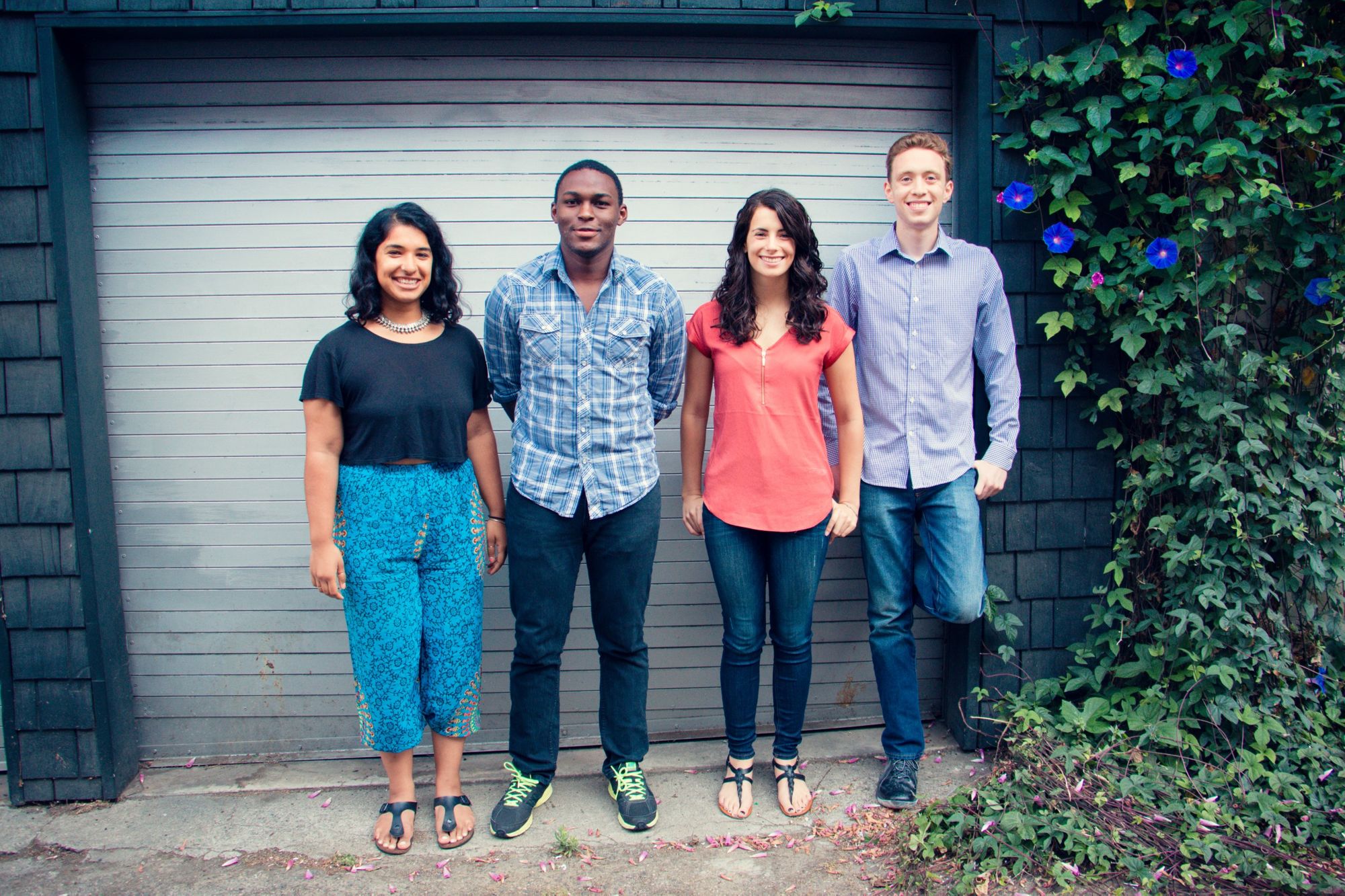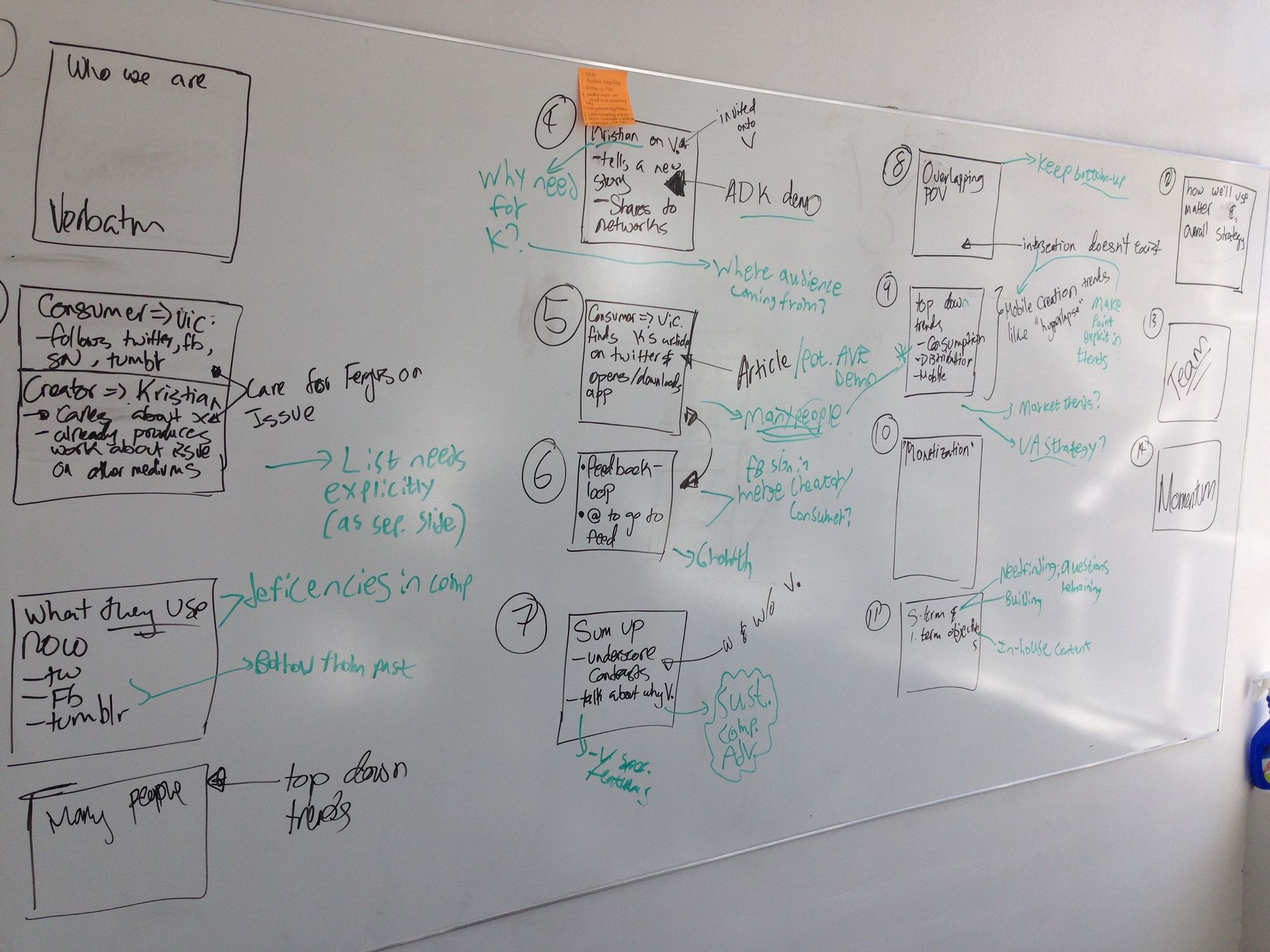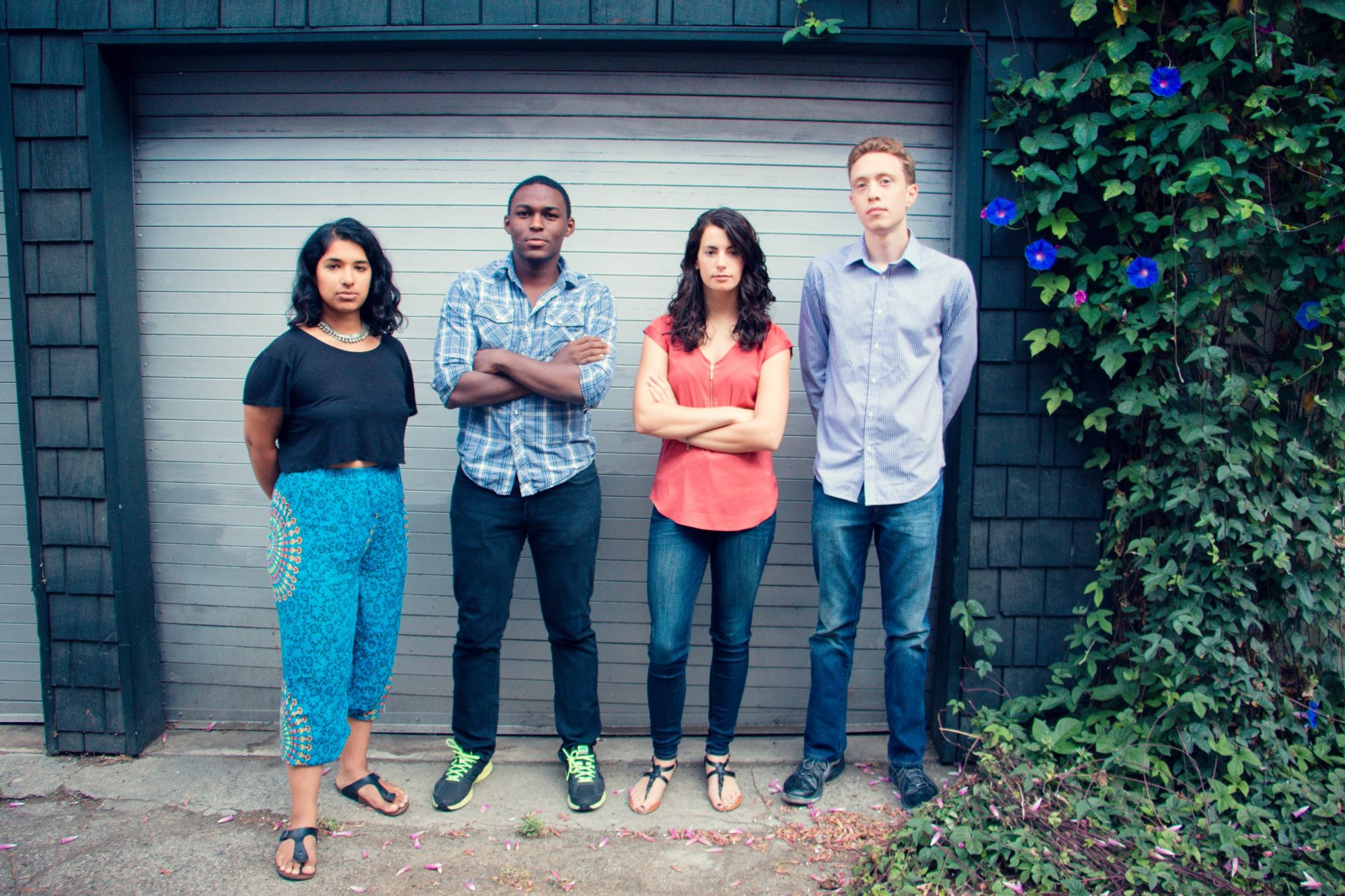Verbatm, Word for Word


It started with two friends chatting over dinner. Where it ends, though currently unknown, promises to be a bit more dramatic.
In the early months of 2014, with a tumultuous year of global protests that would come to define our vision still in store, my friend Iain and I had a talk at one of the twenty buildings on Stanford’s campus named “Arrillaga.” Having gone through Structured Liberal Education (SLE) together freshmen year, a residential program that teaches students about the history of old dead white men, Iain and I were used to discussing big issues. But that day, instead of the Euthyphro Dilemma or the Categorical Imperative, Iain and I were grappling with something a bit more contemporary, and — dare I say it — cool: how the media failed to both adequately address the perspectives of millennials, and to convey those views in an aesthetically engaging manner.
Okay, so SLE kids might have a slightly different definition of “cool.” But I digress.
Let’s give some context. At the time, there were ongoing riots in Venezuela, and the American media was (surprise!) doing a poor job covering the story. This problem was exacerbated by the Venezuelan government’s iron-fisted control of that nation’s own media. A mutual friend of ours had shared a Youtube video describing the situation, asking for us to pass it on to more people. The situation was shocking: thousands were being arrested, dozens had been killed, a regime was on the verge of collapse, and the average American had no idea. Iain and I wondered, given the emotional stakes, why there wasn’t more information out there. Why didn’t people on the ground have an easy way to spread photo, video, and written accounts of the situation on mobile? Even grimmer, why was a suffering nation’s best recourse a not-even-viral video that people around the world could pat themselves on the back for watching and then forget about?

That was the ‘a-ha moment.’ Even with all our era’s advances in technology, even with all our networks meant to connect and inform, even post-Arab Spring and post-Social Media Presidential Election, there were voices and that were still going unheard. Channels for individual media elements — 140 characters here, a grainy video there — did exist, but where was the platform where cohesive, first-person accounts and commentary could thrive?
Long after the dining hall had switched over from dinner to late night service, Iain and I kept returning to one central issue: there was no means by which both content creators and content consumers could express their experiences and address an audience in a manner that made them feel valued, heard, and empowered. To tell their stories in their own words, Verbatm. (Yes, that’s where the name comes from).
From our initial conversation, which quickly spiralled into chains of texts and the first several of infinite follow-up meetings, Iain and I realized that this was a mission we wanted to fully devote ourselves to. It represented the best possible method to parlay a Stanford education into precisely what this amazing gift is meant for — empowering the voiceless. And over the course of that year and beyond, between activism from Hong Kong to Ferguson and violence from Iraq to Baltimore, the need for such a media outlet became more sadly apparent with each passing day.
We knew we needed someone to help bring our vision to reality and began to assemble a team, starting with a designer. We got that and far, far, faaaaaar more (seriously, think lightyears) when Aishwarya joined us. Instead of someone who merely made our orders look pretty, she took full initiative in reimagining the product from start to finish, crafting the Verbatm we are today. Moreover, her long history of activism — including work with the Black Lives Matter and Campus Sexual Assault movements — validated the meaningful spirit of what Iain and I set out to accomplish, making it flesh and blood rather than theoretical. Along the way, she taught us the invaluable lesson of the design thinking process: the build-you-up, break-you-down, always-be-testing, user-focused methodology that has guided us ever since. In just a few months, the product was every bit hers as it was ours, and the three of us incorporated as co-founders.

After a Herculean effort from Iain to build our mobile platform, the time came to hire another engineer (the time may or may not have come thanks to Iain’s repeated begging for sleep and time to contact his family). Aishwarya quickly contacted Sierra, an engineer she had worked with at the Stanford chapter of the NAACP. Drawn to both Sierra’s insatiable passion for social justice and her incredible talent for coding and managing technical tasks, we brought her in for an interview and left wondering why we hadn’t already hired her. As a member of the team, Sierra is vital toward our continued progress on creating our building and viewing experiences — the way in which our multimedia pieces are assembled and viewed — the key features that define Verbatm.
The next milestone in our history came with our acceptance into Matter. Naturally, when we heard that there was an accelerator right in our backyard that helped media companies build an informed, connected, and empowered society via the design thinking process, we were willing to do whatever it took to join. The program was virtually made for us, and with each hurdle cleared in the interview process, our excitement mounted.
For the record, I never thought we would make it, a fact my team loves to remind me of. It wasn’t because we had nothing to offer, but because Matter offered us so much. Thankfully, I was lucky enough to be wrong; Matter took a chance on us, validating the strength of our vision and team over the fact that we still get carded. Today, we’re so excited to be a part of this incredible cohort, and we know that the knowledge and opportunities to be gleaned from the program will be instrumental as we continue to grow.

We know what you’re thinking — we’ve set some lofty goals for ourselves. Truth be told, most of our answers haven’t been reached, and sometimes we can’t even agree on the questions. But on the days when it’s just not coming to us, we remember that it’s all part of the process, put our heads down, and keep on iterating. We’ve come a long way in just a brief time. While there’s still so much to do, and even though the target refuses to stand still, we know we have a team around us that’s built to succeed.
Yes, in the immortal words of that song from a few summers ago, we are, in fact, young. If we had a dollar for every “you’re how old, exactly?” or “aren’t you a little young for this?” we’ve received, we’d be well on our way toward closing a successful Series A.
But where others might look at our youth and see immaturity and naiveté, we see opportunity (and, granted, the occasional instance of immaturity and naiveté). Most people can agree that the current media infrastructure is woefully inadequate, if not outright broken. When it comes to such an entrenched force, change usually comes from without. Our team sits at an ideal position: raised on a media system starved for iteration, fluent in the society-shaking movements already underway, creative enough to dream up new changes, and dedicated enough to make it all happen.

In order to transform the media space into something stronger — something that lasts — we must expand its base. Instead of a top-down apparatus offering the same old content, we must recruit from the bottom up, crafting a system where all voices are heard. And of course, because that system also happens to look great and be super fun to use, these changes will catch on all the quicker.
Yes, it’s quite the construction project. But we would go so far as to say that no one is better equipped for the task. To borrow from one of the team’s sources of inspiration, the master’s tools will never dismantle the master’s house. And Verbatm is a tool for change the likes of which the world has never seen.
Sure, big talk for a bunch of kids who can’t even rent a car. But to borrow from another source of inspiration, everything big starts small.
Sometimes, it even starts over dinner.
Follow Verbatm on Twitter, our website, or send an email to founders@myverbatm.com

